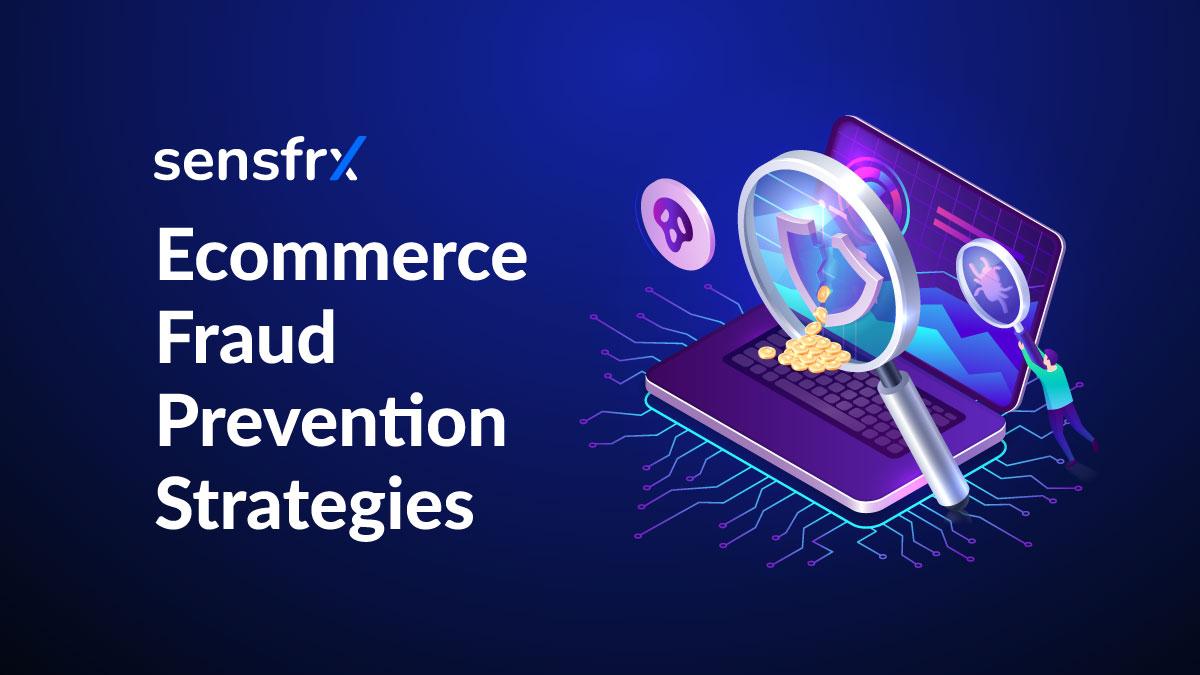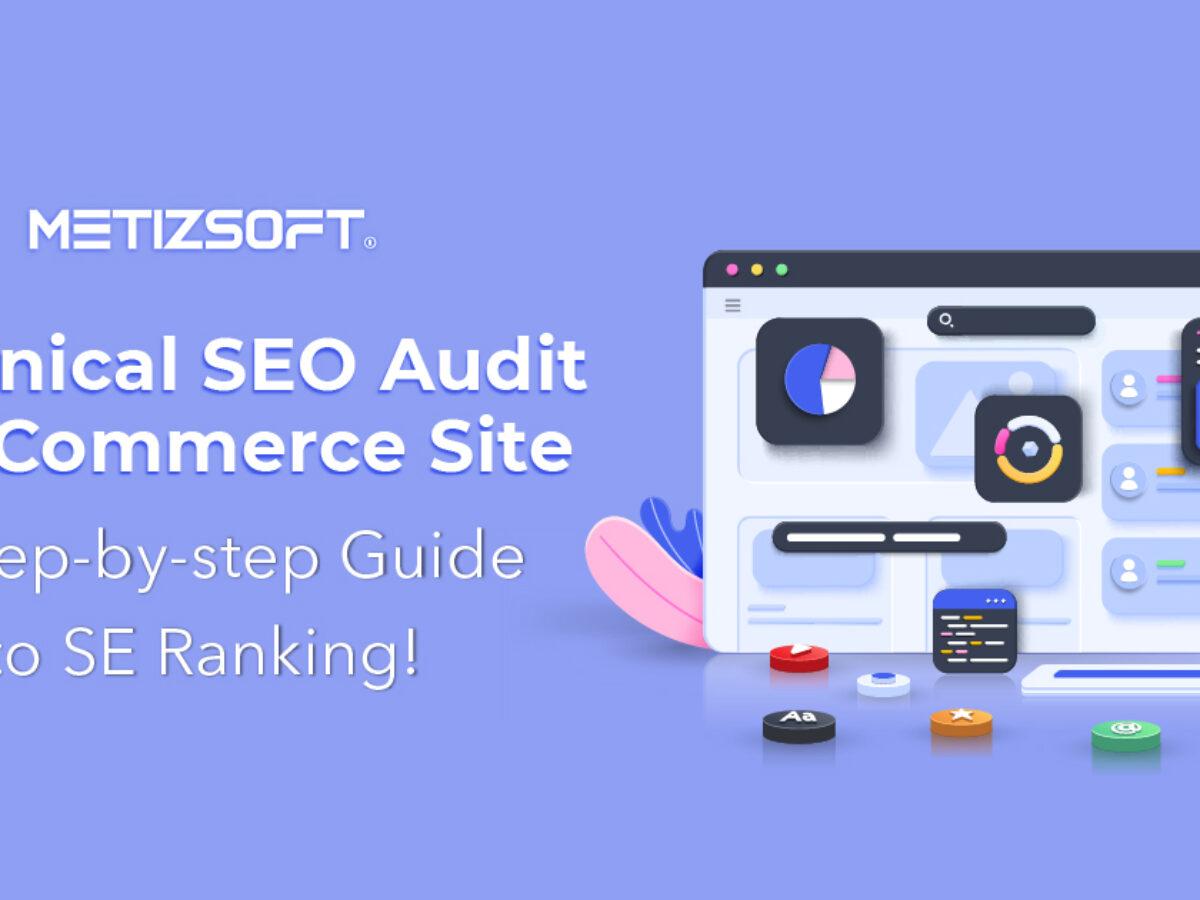In the fast-paced world of eCommerce, the thrill of a accomplished transaction can quickly turn into a nightmare if fraud rears its ugly head. With online shopping becoming a staple of modern life, the risk of fraudulent activities has skyrocketed, leaving both businesses and consumers vulnerable. But don’t worry! Preventing eCommerce fraud doesn’t have to be an uphill battle. In this article,we’ll explore 19 essential practices that cater to all types of fraud,empowering you and your business to stay one step ahead of the scammers. Whether you’re a seasoned online retailer or just starting your digital journey, implementing these strategies can safeguard your operations, protect your customers, and ultimately boost your bottom line. Ready to fortify your defenses and create a secure shopping experience? Let’s dive in!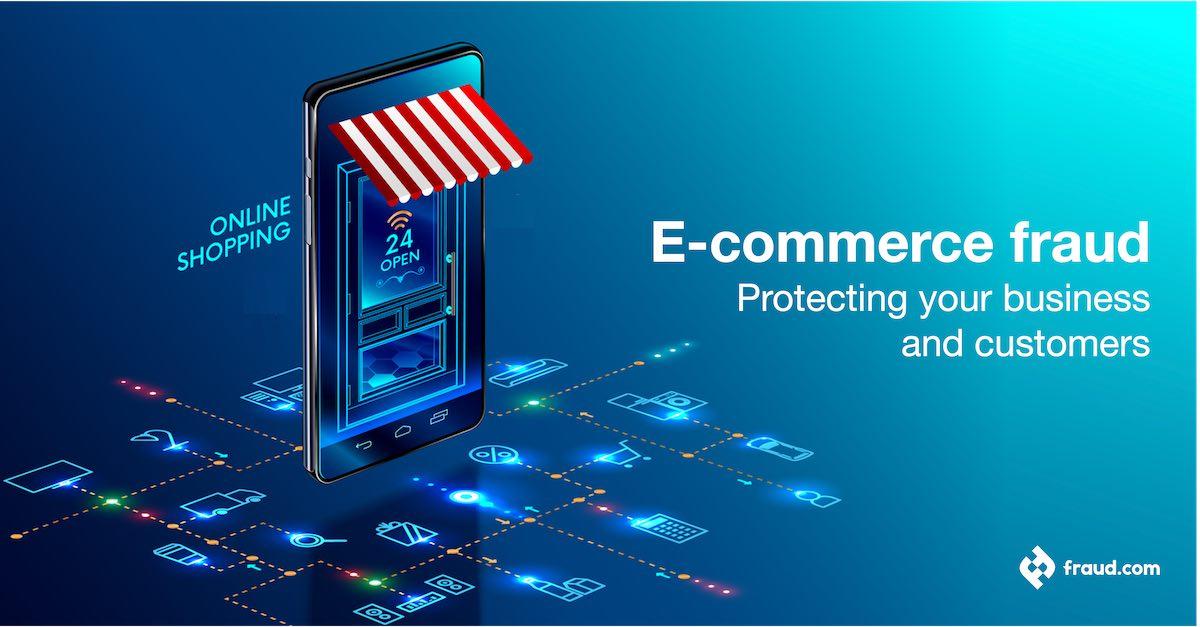
Understanding the Different Types of Ecommerce Fraud
Ecommerce fraud can take many forms, each with its unique characteristics and impacts on businesses and consumers alike. Understanding these different types is crucial for effective prevention strategies. Here are some of the most common types of ecommerce fraud:
- Credit card Fraud: This is one of the most prevalent types of ecommerce fraud, where stolen credit card information is used to make unauthorized purchases. It can occur when hackers gain access to payment details through data breaches or phishing scams.
- Account Takeover: In this scenario, fraudsters gain access to a customer’s account, often through stolen credentials, and make purchases on their behalf. This type of fraud can lead to notable losses for both the consumer and the retailer.
- Refund Fraud: This occurs when a customer returns a product but keeps the money. This can involve returning items that were never purchased, using fake receipts, or manipulating refund policies.
- Friendly Fraud: here, a legitimate customer makes a purchase and then disputes the charge with their credit card issuer, claiming that the transaction was unauthorized. This cleverly disguises the fraud as a legitimate dispute.
- Identity Theft: This type involves using someone else’s personal information to create accounts and make purchases. It often overlaps with other forms of fraud and can have long-lasting effects on the victim.
To combat these fraud types, businesses need to employ a multi-layered approach. Implementing solutions such as two-factor authentication, address verification systems, and fraud detection algorithms can help identify and mitigate risks before they impact your bottom line. Regularly updating your security measures and training staff on recognizing fraudulent behavior are also essential components of a robust fraud prevention strategy.
| Type of Fraud | Common Signs | Prevention Tactics |
|---|---|---|
| Credit Card Fraud | Multiple purchases in a short time | Use of fraud detection tools |
| Account Takeover | Unusual login locations | Implement two-factor authentication |
| Refund Fraud | High return rates | Careful review of return requests |
| Friendly Fraud | Frequent disputes from the same customer | Monitor transaction patterns closely |
| identity Theft | Inconsistent customer information | Verify identities during account creation |
While the landscape of ecommerce fraud is ever-evolving, staying informed about its various forms can empower businesses to take proactive measures. Knowledge is your first line of defense, along with adopting cutting-edge technology and fostering a culture of vigilance among staff. By doing so, online retailers can considerably reduce their vulnerability to fraud and protect both their interests and their customers’ trust.
Recognizing Warning signs to Stay One Step Ahead
In the fast-paced world of ecommerce, staying vigilant is essential to combat fraud. Recognizing the warning signs can save your business from significant losses and protect your customers. Being proactive means understanding the common indicators of fraudulent activity and adapting your strategies accordingly.
One of the first red flags to watch for is inconsistent customer information. If a customer’s shipping address does not match their billing address, or if they use multiple credit cards with different names, these could be signs of an attempt to defraud. Additionally, monitoring purchase patterns is crucial. Sudden spikes in orders from a specific location or unusually high-value purchases from new accounts can indicate fraudulent behavior.
Another important aspect is to keep an eye on device fingerprints. If a customer’s account is accessed from multiple devices or locations in a short period, it could mean that their account has been compromised. Implementing technology to track these anomalies can provide crucial insights and allow for immediate action. Furthermore, pay attention to language and communication styles in customer inquiries. Generic or poorly written messages can sometimes hint at a scammer attempting to exploit your services.
It’s also vital to harness the power of data analytics. Analyzing transaction data can help you spot trends indicative of fraudulent activity. For instance, if a certain product is being targeted consistently by multiple accounts, it’s worth investigating further. You can use a simple table to track these trends:
| Indicator | Action Required |
|---|---|
| Multiple orders from same IP | Flag for review |
| High-value purchase from new account | Verify customer identity |
| Inconsistent shipping and billing addresses | Request additional information |
By integrating these practices into your operations, you can significantly reduce the risk of fraud.Remember, being proactive and aware of warning signs is key to maintaining a secure ecommerce environment. Your vigilance can protect both your business and your customers, fostering trust and long-term loyalty.

essential Tools for Effective Fraud Detection
When it comes to safeguarding your eCommerce business from fraud, having the right tools at your disposal is crucial.Implementing effective fraud detection strategies can help you minimize losses and maintain customer trust. Here are some essential tools and technologies that can enhance your fraud prevention efforts:
- Fraud detection Software: Invest in comprehensive platforms that utilize machine learning and AI to analyze transaction patterns and flag suspicious activities in real-time.
- Payment Gateways: Choose gateways with built-in fraud detection features, such as Address Verification System (AVS) and Card Verification Value (CVV) checks, which add an extra layer of security.
- Identity Verification Tools: Use services that verify user identities through various means, such as biometric authentication and document verification, to ensure that the person making a purchase is legitimate.
In addition to these tools, consider integrating the following practices into your fraud detection strategy:
- Risk Scoring: Implement a risk scoring system that evaluates transactions based on multiple factors, such as purchase history, geographic location, and payment method.
- Behavioral Analytics: Analyze user behavior on your website to establish a baseline for normal activity, making it easier to identify anomalies that may indicate fraudulent actions.
- Customer Feedback Mechanisms: Encourage customers to report suspicious activities or transactions. This can provide valuable insights and help improve your fraud detection processes.
The effectiveness of these tools can be amplified when you have a clear understanding of the types of fraud your eCommerce business faces. Here’s a simple overview of common fraud types and how specific tools can address them:
| Fraud Type | Recommended Tools | key Features |
|---|---|---|
| Account Takeover | Identity verification tools | Biometric checks, document validation |
| Payment Fraud | Fraud Detection Software | Real-time monitoring, AI analysis |
| Chargebacks | Risk Scoring Systems | Data analysis, transaction flags |
By implementing these essential tools and practices, you’ll not only bolster your defenses against fraud but also create a safer shopping experience for your customers. remember, a proactive approach to fraud detection can save your business from significant financial losses and reputational damage.
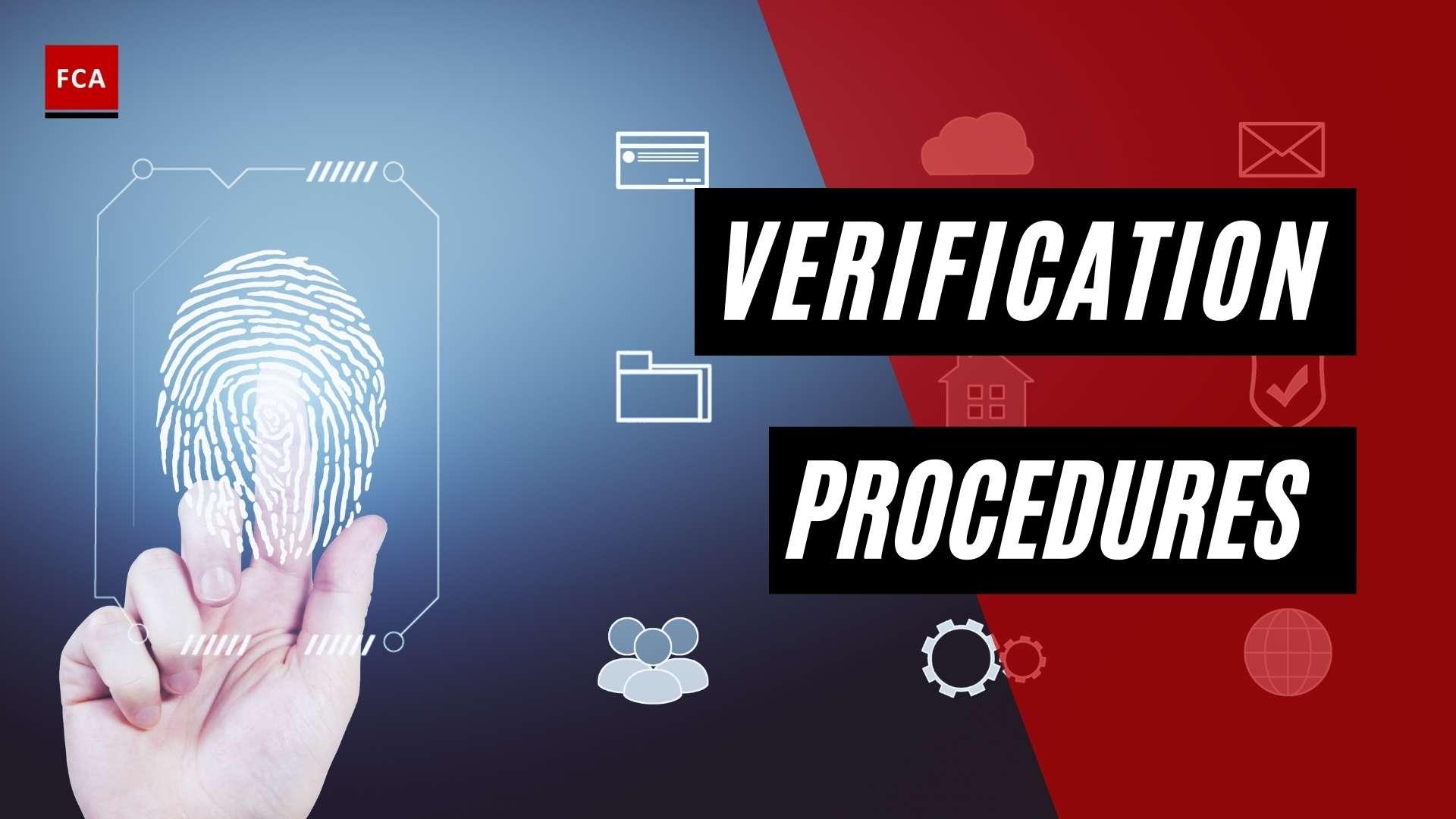
Building a Robust Customer Verification Process
Establishing a strong customer verification process is vital in the fight against ecommerce fraud. As online transactions grow, so do the tactics employed by fraudsters. By implementing a thorough verification strategy, businesses can protect themselves and their customers while fostering a trustworthy shopping environment. here are some key components to consider:
- Email Verification: Require users to confirm their email addresses before proceeding with their purchases. This simple step can significantly reduce the risk of fraudulent accounts.
- Phone Number Verification: Utilize SMS verification codes for additional security. Customers must input a code sent to their mobile device, ensuring that the phone number is valid and linked to them.
- Two-Factor Authentication (2FA): Encourage or mandate the use of 2FA for customer accounts. This extra layer of security requires users to provide two different authentication factors, making unauthorized access much more difficult.
- Identity Verification Services: Partner with third-party identity verification providers that specialize in fraud prevention. These services can definitely help confirm a customer’s identity through various checks, such as government ID verification or biometric data analysis.
In addition to these measures, leveraging data analytics can enhance your verification process. By analyzing transaction patterns and user behavior, you can identify anomalies that may indicate fraudulent activity. Consider integrating machine learning algorithms that adapt and improve over time, allowing for real-time risk assessment. This could include:
| Data Points | Indicators of Fraud |
|---|---|
| Purchase Frequency | Unusually high volume in a short period |
| Shipping Address Changes | Frequent changes shortly after purchase |
| Geolocation | IP address does not match billing address |
ensure that your customer service team is well-trained in fraud detection and response. Equip them with the tools and knowledge necessary to recognize suspicious behavior and manage potential fraud cases effectively. When customers feel they have access to support, they are more likely to report any unusual activity, creating a community of vigilance that benefits everyone.
By creating a robust customer verification process, you not only protect your business but also enhance the overall customer experience. In an era where digital trust is paramount, demonstrating your commitment to security can be a powerful differentiator in the competitive ecommerce landscape.
Leveraging Machine Learning for Enhanced Security
In today’s digital landscape, where online transactions are a daily occurrence, machine learning has emerged as a powerful ally in the fight against ecommerce fraud. By analyzing vast amounts of data in real-time, machine learning algorithms can detect suspicious patterns and behaviors that would be nearly unachievable for humans to identify alone.This technology not only enhances security but also helps businesses stay one step ahead of fraudsters.
one of the crucial advantages of machine learning is its ability to adapt and learn over time. As fraudsters develop new tactics, machine learning systems can update their models to recognize these evolving threats. This means that the more data the system analyzes, the better it gets at distinguishing between legitimate and fraudulent transactions. Without this adaptability, ecommerce platforms risk falling prey to increasingly refined scams.
To fully leverage machine learning in fraud prevention, businesses should consider the following practices:
- Data Integration: Combine data from multiple sources, such as transaction history, customer behavior, and geographical location, to create a more comprehensive profile of each transaction.
- Anomaly Detection: Implement algorithms that flag unusual spikes or patterns in transaction data, which may indicate fraudulent activity.
- Risk Scoring: Develop a risk assessment model that assigns scores to transactions based on various factors, enabling merchants to prioritize which transactions to review.
Furthermore, collaborative efforts can enhance machine learning effectiveness. By sharing anonymized data across industries, businesses can improve their models and reduce false positives, which often lead to legitimate customers being wrongly flagged. This collaboration not only strengthens individual security measures but also contributes to a more secure ecommerce ecosystem as a whole.
It’s also worth noting that the implementation of machine learning for fraud prevention is not just a technological upgrade; it’s a strategic move that can foster customer trust. When consumers feel secure in their transactions, they are more likely to engage with a brand repeatedly. Thus, investing in robust machine learning systems can ultimately lead to increased customer loyalty and higher revenues.

Creating a Seamless Checkout Experience Without Compromising Safety
In the fast-paced world of ecommerce, a smooth checkout process is essential to capturing sales and enhancing customer satisfaction. Though,ensuring this seamless experience does not come at the risk of compromising safety is crucial. Fortunately, there are effective strategies that businesses can implement to balance convenience with security, creating an environment where customers feel safe to complete their transactions.
First and foremost, implementing multi-factor authentication (MFA) is a powerful way to enhance security without adding friction. by requiring users to confirm their identity through multiple verification methods—such as a text message code or an email link—customers can feel reassured that their sensitive information is protected. Additionally, integrating biometric authentication options, like fingerprint or facial recognition, can streamline the login and checkout process, making it both secure and user-friendly.
Moreover, employing a guest checkout option can significantly reduce cart abandonment rates. Many customers prefer to make speedy purchases without the hassle of creating an account. By allowing a guest checkout while still capturing essential information for safety measures, such as billing and shipping addresses, businesses can achieve the perfect balance of convenience and security.
| Checkout Feature | benefits |
|---|---|
| Multi-Factor Authentication | Enhances security and builds customer trust. |
| guest Checkout Option | Reduces cart abandonment and speeds up the purchase process. |
| Real-Time Fraud Detection | Identifies suspicious behavior and prevents fraudulent transactions. |
Additionally, it’s crucial to integrate real-time fraud detection tools that analyze transaction patterns and flag unusual activity. these tools can operate behind the scenes, allowing legitimate customers to proceed with their purchases while concurrently protecting against potential threats. Providing clarity about your fraud prevention measures can also instill confidence in your customers, making them more likely to complete their checkout process.
consistent communication throughout the checkout process is key. Ensure that customers receive notifications about their order status, payment confirmation, and shipping details. This not only reassures them of their transaction’s safety but also enhances their overall experience with your brand. When customers know they are being looked after, they are more likely to return for future purchases.
Training Your Team to Spot and Prevent Fraud
Training your team to recognize and prevent fraud is essential in today’s eCommerce landscape.With the rise in online transactions, it’s crucial that every member of your team understands the various types of fraud and knows how to identify suspicious activities. An informed team not only acts as a first line of defense but also fosters a culture of vigilance across the organization.
Implementing regular training sessions can empower your team with the knowledge they need. Consider the following key elements for your training program:
- Understanding Fraud Types: Educate your team on the different forms of eCommerce fraud, such as credit card fraud, account takeover, and chargebacks.
- Red Flags to Watch For: Provide examples of common indicators of fraudulent behavior, including unusual purchasing patterns or mismatched billing and shipping addresses.
- Using Analytics Tools: Train staff on how to utilize analytics and fraud detection tools effectively to spot anomalies in transactions.
- Role-Playing Scenarios: Conduct role-playing exercises where team members can practice their skills in identifying and responding to potential fraud situations.
to ensure that your training is effective, consider creating a simple reference guide that summarizes key points. Here’s an example of what that could look like:
| Fraud Type | Red Flags | Response Actions |
|---|---|---|
| Credit Card Fraud | Unusual purchasing patterns | Verify with the customer |
| Account Takeover | Multiple failed login attempts | lock the account and alert the user |
| Chargebacks | High volume of returns | Investigate and review return policies |
Encouraging an open dialog about fraud can also significantly enhance your team’s confidence. Foster an environment where employees feel pleasant discussing their concerns or suspicious activities without fear of reprimand. Regularly update your team about new fraud trends and share success stories of effective fraud prevention, reinforcing the importance of their role in safeguarding the business.
an engaged and well-trained team is your strongest asset in the fight against eCommerce fraud.By providing them with the right tools and knowledge, you can create a proactive defense that not only protects your business but also builds trust with your customers.
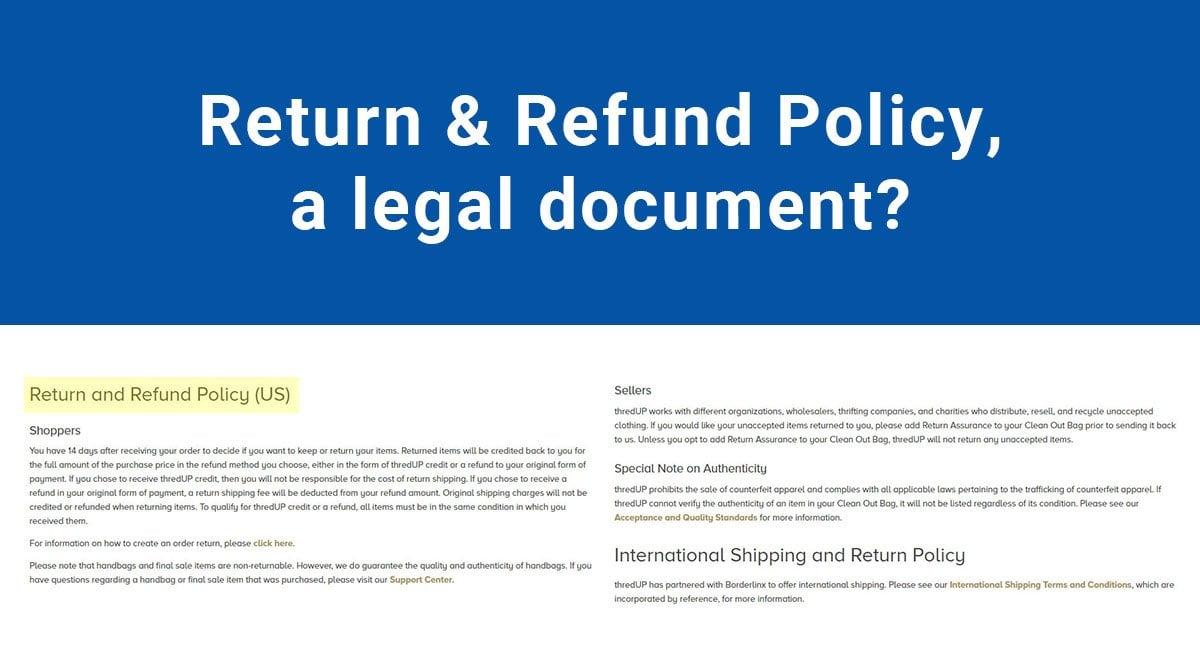
Establishing a Strong Refund and Return Policy
Creating a robust refund and return policy is a cornerstone of customer trust and satisfaction. A transparent and fair policy not only reassures customers about their purchase decisions but also acts as a deterrent against potential fraud. When customers feel secure in their transactions, they are more likely to complete their purchases and return for future business.
Here are essential elements to consider when crafting your policy:
- Clarity: Use simple language and avoid jargon. Ensure that customers understand the terms without confusion.
- Timeframe: Clearly specify the duration within which customers can return items. Common periods range from 30 to 90 days.
- Conditions: Detail the condition in which items must be returned. As a notable example, items should be unused, with original tags attached.
- Process: Outline the steps a customer must take to initiate a return. This could include filling out a form or contacting customer service.
- Refund method: State how refunds will be processed—whether it’s via the original payment method, store credit, or a gift card.
Moreover, consider implementing a no-questions-asked return policy for certain products. This approach can improve customer loyalty and reduce the desire for fraudulent returns, as it creates an environment of trust. Customers appreciate the hassle-free experience, which can lead to increased conversions and positive reviews.
| Policy Element | Best Practices |
|---|---|
| Clarity | Use simple, straightforward language. |
| Timeframe | Offer a flexible return window (e.g., 60 days). |
| Conditions | Specify if items must be unopened or unused. |
| Process | Provide step-by-step instructions for returns. |
| Refund Method | List all possible ways customers can receive their refunds. |
lastly, it’s vital to regularly review and update your refund and return policy. As your business evolves and customer feedback rolls in, tweak your policy to better serve your customers and respond to fraud trends. A proactive approach not only mitigates risks but also enhances customer relationship management.
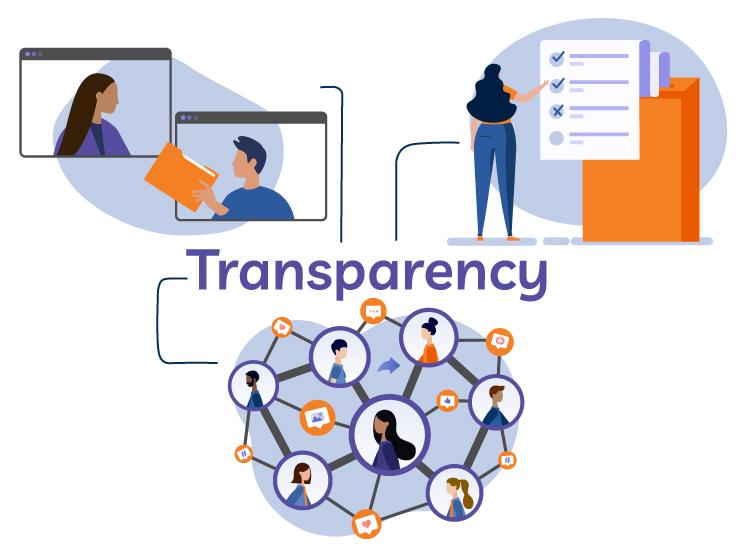
Maintaining Transparency to Build Customer Trust
In today’s digital marketplace,transparency is not just a buzzword; it’s a basic pillar that supports customer trust and loyalty. When customers feel they have insight into your processes, they are more likely to engage with your brand and make purchases without hesitation.Ensuring that your customers understand your policies, practices, and the security measures you have in place will foster a sense of safety and reliability.
Here are some key areas where transparency can make a significant impact:
- Clear Communication: Keep your customers informed about their orders, from the moment they click ‘buy’ to delivery and beyond. Regular updates about shipping,tracking,and any changes in their order status can enhance their confidence.
- Honest Product Descriptions: Provide accurate and detailed descriptions of your products. Misleading information can lead to returns and dissatisfaction, damaging trust. If a product is out of stock, communicate it clearly rather than leaving customers in the dark.
- Accessible Policies: Make your return, refund, and privacy policies easily accessible and understandable. A complex policy can raise red flags for potential buyers, while a straightforward approach demonstrates your commitment to customer satisfaction.
Another effective way to maintain transparency is through customer reviews and testimonials. By showcasing real experiences from other buyers,you not only validate your products but also create a community of trust. Encourage customers to leave feedback and respond to their comments, showing that you value their opinions and are committed to continuous advancement.
Consider implementing a dedicated section on your website that addresses common questions and concerns related to fraud prevention. This could include:
| common concern | Transparent Solution |
|---|---|
| how is my payment information secured? | We use industry-standard encryption protocols to protect all transactions. |
| What if I receive a defective product? | We offer a hassle-free return policy, with no questions asked. |
| How do you handle data privacy? | Your information is never shared without your consent; see our privacy policy for details. |
by prioritizing transparency in these areas, you not only mitigate potential doubts but also instill a culture of trust that can significantly reduce your vulnerability to fraud. Customers are more likely to feel secure making purchases when they know they are working with a brand that is open about its practices and values their safety. in this way, transparency becomes a powerful tool in your eCommerce fraud prevention arsenal.
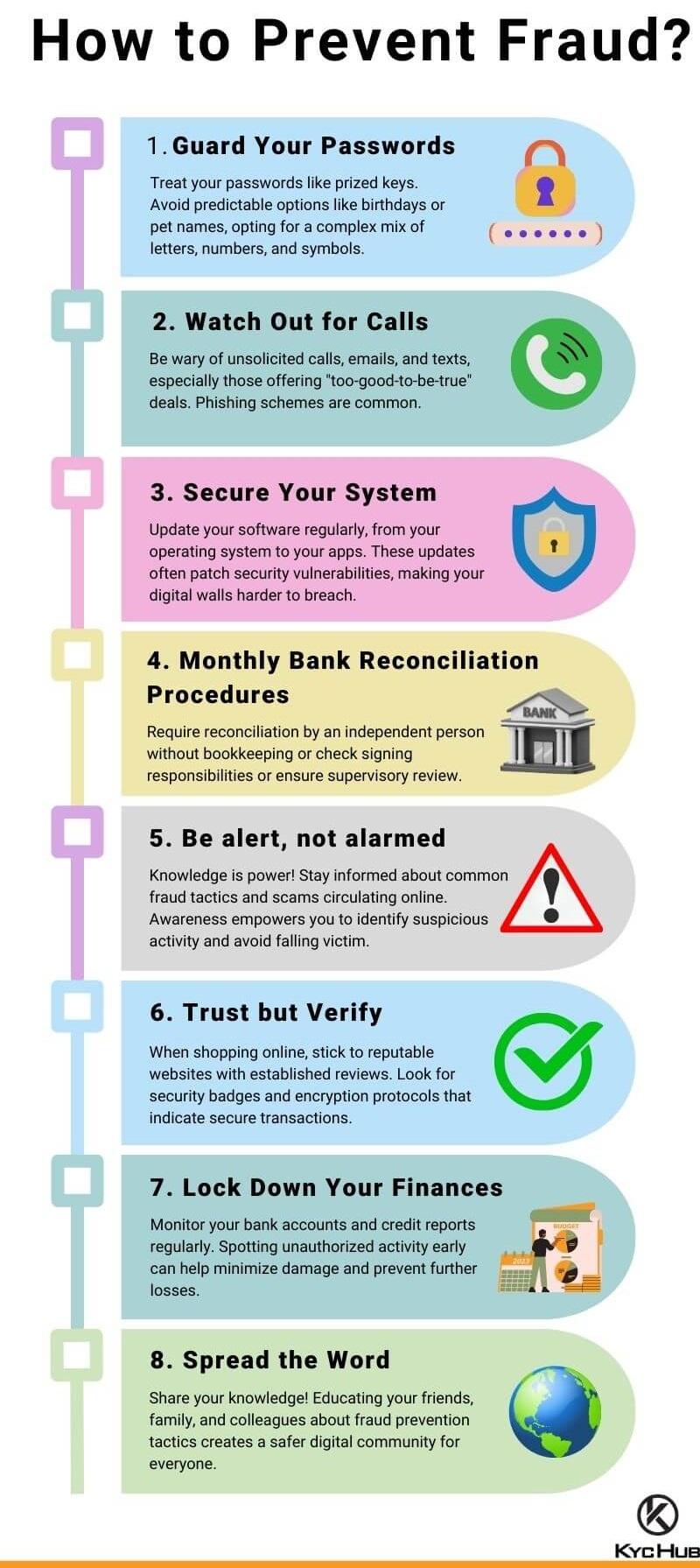
Responding Proactively to Fraud Incidents for future Protection
In the ever-evolving landscape of ecommerce, the ability to respond effectively to fraud incidents is crucial for safeguarding your business and customers. By adopting a proactive stance, you can not only mitigate immediate risks but also fortify your defenses against future threats. Here are some practical strategies to enhance your response mechanism:
- Establish a Fraud Response Team: Assemble a dedicated team responsible for managing fraud incidents.This team should include members from various departments, such as IT, finance, and customer service, to ensure a well-rounded approach.
- implement real-Time Monitoring: Utilize tools that provide real-time analytics and alerts for suspicious transactions. This allows for immediate action to be taken when fraudulent activities are detected.
- Conduct regular Training: Regularly educate your team on the latest fraud tactics and prevention strategies. This empowers them to recognize and properly respond to potential fraud incidents.
- Create a Clear Incident Response Plan: Develop and document a comprehensive response plan that outlines the steps to take when a fraud incident occurs.Ensure that all team members are familiar with this plan to minimize confusion during a crisis.
Moreover, maintaining transparent communication with your customers is vital. Inform them promptly about any breaches or suspicious activities that may affect their accounts. A proactive notification system not only builds trust but also encourages customers to report any unusual activity they observe.
Here’s a simple table illustrating key actions to take after a fraud incident:
| Action | Description |
|---|---|
| Examination | Thoroughly investigate the incident to identify the source and method of the fraud. |
| Customer Notification | Notify affected customers with details and steps they should take to secure their accounts. |
| System Review | Assess and update security measures and protocols to prevent similar incidents. |
| Documentation | Keep detailed records of the incident and response for future reference and analysis. |
Ultimately, the key to effective fraud prevention lies in your ability to adapt and evolve. by regularly reviewing your fraud response strategies and being open to new technologies and methods, you’ll not only protect your business but also provide peace of mind to your customers. Building a culture of vigilance and responsiveness will go a long way in creating a secure ecommerce environment.
Frequently Asked Questions (FAQ)
Q&A: Ecommerce Fraud Prevention: 19 Practices for All Fraud Types
Q: Why should ecommerce businesses be concerned about fraud?
A: Great question! Ecommerce fraud can lead to significant financial losses, damage to your reputation, and loss of customer trust. In an age where online shopping is booming, it’s vital to have robust fraud prevention measures in place. Just think about it: one successful fraud attempt can undo months of hard work building your brand.
Q: What types of fraud should online retailers be aware of?
A: There are several types of fraud, including credit card fraud, account takeover, friendly fraud, and refund fraud. Each type poses different challenges, and understanding these can help you tailor your prevention strategies effectively. It’s not just about protecting your money; it’s about safeguarding your customers and your business’s integrity.
Q: Can you give me a preview of some practices to prevent ecommerce fraud?
A: Absolutely! Here are a few essential practices:
- Use Address verification Systems (AVS) – This helps to confirm that the billing address matches the one on file with the credit card company.
- Implement Two-Factor Authentication (2FA) – Adding an extra layer of security during login can deter unauthorized access.
- Monitor Transactions in Real-Time – Keep an eye on unusual patterns and behaviors that may indicate fraudulent activity.
- Educate Your Staff – Ensure that your team understands the signs of fraud and knows how to respond effectively.
these are just a few of the practices! The full list includes 19 comprehensive strategies that can make a real difference.
Q: How can these practices benefit my ecommerce business?
A: By implementing these fraud prevention strategies, you’re not just protecting your bottom line; you’re also enhancing customer trust and loyalty. When customers feel safe shopping with you, they’re more likely to return and recommend your business to others. Ultimately,a proactive approach to fraud prevention can lead to greater profitability and a stronger brand reputation.
Q: what if I’m just starting out in ecommerce—is it to late to implement these strategies?
A: not at all! In fact, it’s the perfect time to incorporate these practices into your business model from the get-go. Building a strong foundation for security can save you headaches and costs down the line. It’s much easier to implement these measures when you’re starting than to try to fix vulnerabilities after they’ve caused issues.
Q: How can I stay updated on the latest fraud prevention techniques?
A: Staying informed is crucial! Follow industry blogs, attend webinars, and participate in online forums where ecommerce professionals discuss best practices. Additionally, tools like fraud detection software continually evolve, so keeping abreast of the latest technology can give you an edge in preventing fraud.
Q: What’s the takeaway for ecommerce businesses regarding fraud prevention?
A: The key takeaway is that being proactive is essential. Implementing a robust set of fraud prevention practices not only protects your business but also builds a foundation of trust with your customers. Remember, it’s not just about stopping fraud; it’s about creating a safe and enjoyable shopping experience that keeps customers coming back for more. don’t wait until it’s too late—start investing in your ecommerce security today!
Future Outlook
As we wrap up our exploration of eCommerce fraud prevention, it’s clear that safeguarding your business isn’t just about implementing a set of tools—it’s about fostering a culture of vigilance and trust.With the rise of online shopping, the threats are real, but so are the solutions. By adopting the 19 practices we’ve discussed, you can create a robust defense against various types of fraud, protecting your revenue and your reputation.
Remember, every step you take to enhance your security not only shields your business but also builds customer confidence. Shoppers want to feel safe making purchases online, and by prioritizing fraud prevention, you’re sending a strong message that their security matters to you.
So,don’t wait for a fraud attempt to shake your foundation; be proactive! Dive into these strategies,tailor them to your unique business needs,and watch as you transform your eCommerce platform into a fortress against fraud. Trust us—your future self (and your happy customers) will thank you for it.
Now, go ahead and take action! Implement these practices today and turn fraud prevention into a cornerstone of your business strategy.Let’s make eCommerce a safer place for everyone!

